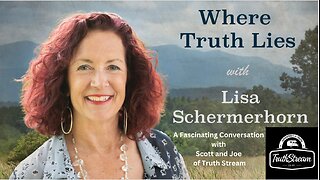Premium Only Content

Audiobook: Theory of Colours, Introduction by Johann Wolfgang von Goethe
The introduction discusses the nature of our desire for knowledge, which begins with our attention to remarkable phenomena. This leads to observation, distinguishing, and combining facts to create an orderly understanding. The text criticizes the tendency to prefer theoretical views over detailed observation.
Historically, attempts to classify color phenomena were made by Theophrastus and Boyle. The present work aims to be the third significant attempt. The author critiques Newton's color hypothesis, likening it to an erroneous astronomical model, and emphasizes the importance of understanding colors through detailed observation rather than theoretical assumptions.
The introduction explains that light, shade, and color together enable the eye to perceive form. It suggests that the eye and light have an intrinsic relationship, with the eye being responsive to light. Color is described as an elementary phenomenon related to vision, manifesting through separation, contrast, commixture, and union.
The work is divided into three classes of colors: physiological (related to the eye), physical (perceived through mediums), and chemical (pertaining to substances). These classes help organize the study of color phenomena, connecting fleeting, enduring, and permanent hues.
The fourth part of the work sketches a future color theory, discussing how colors like yellow and blue appear next to light and darkness, respectively. Mixing these colors produces green, while condensing them leads to red. Colors are considered half-lights and half-shadows, producing grey when mixed to neutralize specific hues.
The fifth part explores the relations of the color theory to other fields. Philosophers, medical practitioners, nature investigators, chemists, mathematicians, and practical individuals like dyers and artists may find value in the work. The theory is intended to provide practical insights and a comprehensive understanding of colors, aiming to improve practical applications and artistic endeavors.
-
 4:05
4:05
Dangerous reads
1 year agoUnveiling The Ultimate Evil: Beyond the Son of Sam, Ep. 7
130 -
 1:19:55
1:19:55
TruthStream with Joe and Scott
1 day agoLisa, Michelle and Carole join Joe for Healing and Inspiration. Next healing will be on Aug 28th at Noon and 4pm eastern https://www.balancingbodyandsoul.com/?ref=TRUTHSTREAMSHOW
3.54K1 -
 10:32
10:32
Nikko Ortiz
15 hours agoFunniest Fails Of The Month
24.6K3 -
 28:59
28:59
The Jack Brewer Show
12 hours agoThe Jack Brewer Show S1 EP5 Charles Duke Tanner on Redemption, Fatherhood & Second Chances #podcast
2.03K -
 15:33
15:33
Bearing
22 hours agoSEPTUM RING THEORY 💥 Are Nose Ring Girls ALL INSANE LIBERALS?! 💀🤣
2.92K53 -
 1:18
1:18
WildCreatures
2 days ago $0.63 earnedTourists unintentionally come face to face with jaguar in Brazil's Pantanal
1.4K14 -
 40:36
40:36
State of the Second Podcast
17 hours agoWhy Training Is an Investment in Your Life (ft. Tre’Von Barber)
41 -
 1:03:43
1:03:43
Dialogue works
1 day ago $0.40 earnedCol. Larry Wilkerson: Warning Signs Everywhere: U.S. on the Verge of Disaster
16.1K9 -
 1:09:42
1:09:42
Mike Rowe
7 days agoHow Did THIS Dirty Job Make Tommy Mello A Billionaire?! | #447 | The Way I Heard It
88.6K21 -
 2:01:37
2:01:37
MG Show
19 hours agoTrump Says Soros Should be Charged with RICO; Bill Gates Pulls Out of Arabella Advisors
12.9K28